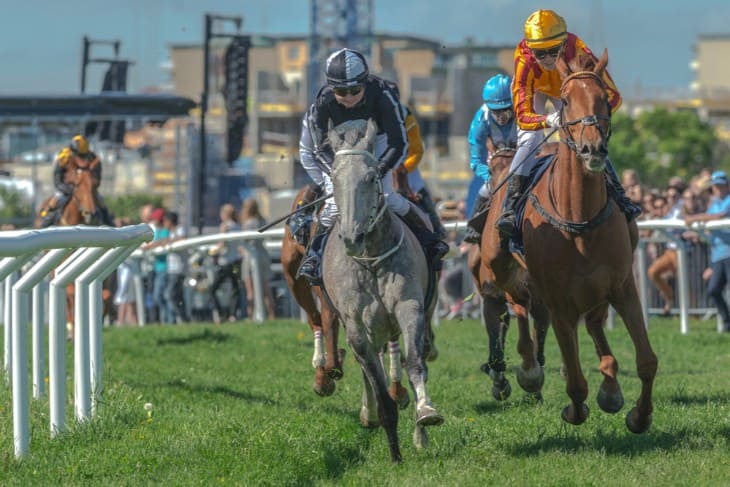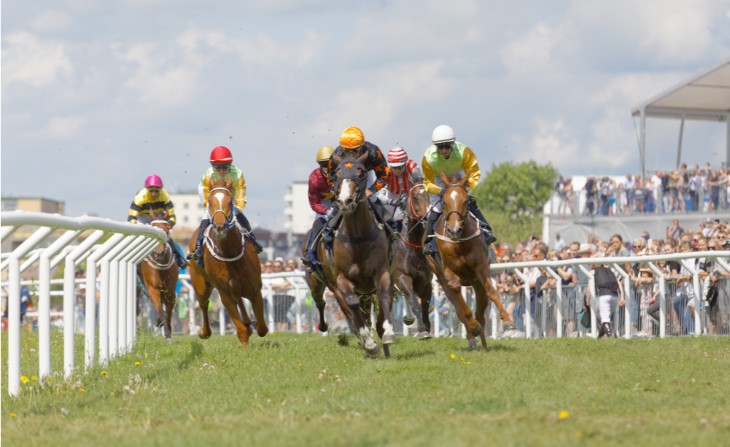- Unravelling the Trackside Lexicon
- What does or mean in horse racing
- What does handicap mean in horse racing
- What does ur mean in horse racing
- What does nap mean in horse racing?
- What does sp mean in horse racing
- The Pinnacle of Performance: "Group" and "Listed" Races
- Grasping the Tactics of Tote Betting
- Conclusion
Unravelling the Trackside Lexicon
The sport of kings has cultivated its own distinct lexicon, a linguistic tapestry woven with the threads of tradition, strategy, and raw athleticism. From the cryptic symbols on the racecard to the rapid-fire commentary of the announcer, mastering these terms is the key to unlocking the true essence of the sport, elevating your experience, and providing invaluable insights into the drama unfolding on the track.
- Understanding the language of horse racing allows you to appreciate the nuances of the sport, from the complex calculations of handicapping to the split-second decisions of jockeys.
- The jargon serves as a secret code, a badge of honour for those who have immersed themselves in the world of the turf, separating the initiated from the casual observer.
- Mastering the terminology not only enhances your enjoyment of the races but also empowers you to engage in informed discussions and make more educated betting decisions.
What does or mean in horse racing
The Official Rating, commonly referred to as "OR," is a numerical assessment that quantifies a horse's ability relative to its peers. This rating is calculated by a team of expert handicappers, who meticulously analyse a horse's recent performances, the quality of the races it has contested, and the weight it has carried. A higher OR indicates a more accomplished and formidable horse, while a lower rating suggests a less proven or less capable contender.
Understanding the OR is crucial for both punters and racing enthusiasts, as it serves as a benchmark for assessing a horse's chances in a particular race. It aids bettors in making informed decisions, while also providing a valuable tool for handicapping and race analysis. Moreover, the OR plays a pivotal role in determining a horse's weight in handicap races, where the aim is to create an even playing field by assigning weights that theoretically bring all runners to an equal level of ability.
- The OR is a dynamic figure that evolves with a horse's performance, reflecting its ascent or decline in form and ability over time.
- A significant discrepancy between a horse's OR and its assigned weight in a handicap race can signal a potential edge for savvy punters.
- Tracking the fluctuations in a horse's OR can provide valuable insights into its training regimen, fitness levels, and overall potential for success.
What does handicap mean in horse racing
A handicap race is a meticulously designed system that aims to level the odds by assigning weights to horses based on their perceived ability. The goal is to create a scenario where each horse has an equal chance of winning, transforming every race into a thrilling showdown of skill and strategy. Skilled handicappers, armed with a wealth of knowledge and experience, meticulously analyse form, fitness, and potential, using their expertise to determine the precise weights each horse must carry.
While the concept of handicapping might seem straightforward, it is an intricate art that demands a delicate balance. Assign too much weight to a horse, and it might struggle to maintain its pace. Conversely, a featherweight burden could grant an undue advantage. The handicapper's task is akin to composing a musical masterpiece, ensuring the harmony of competition while keeping the excitement alive.
- Handicap races can provide thrilling upsets, as an underrated horse rises to the challenge of overcoming its weight disadvantage.
- The weight assignments in handicap races can provide valuable insights into a handicapper's assessment of a horse's true potential and ability.
- Successful handicappers must possess a keen eye for detail, taking into account a wide range of factors, from track conditions to a horse's running style.

What does ur mean in horse racing
"UR," an abbreviation for "unseated rider," is a dramatic occurrence that injects an element of unpredictability into a race. It signifies that a horse's jockey has been unseated from their mount during the course of the race. Despite this setback, the horse continues its gallop unguided, adding an air of uncertainty and excitement to the proceedings.
The reasons for an unseated rider can vary – a stumble, a collision, or a mere misstep. It is a testament to the athleticism and courage of both horse and rider that they can navigate such challenging circumstances. From a betting perspective, a "UR" can turn the tide of expectations, reshuffling the pack and redefining the race's dynamics in an instant.
- An unseated rider can dramatically alter the course of a race, as the riderless horse may struggle to maintain its pace or direction.
- In some cases, a horse may continue to run competitively despite the absence of a jockey, showcasing its innate instincts and training.
- The occurrence of a "UR" can lead to dramatic shifts in odds and payouts, as punters scramble to adjust their expectations and strategies.
What does nap mean in horse racing?
In the world of horse racing, enthusiasts and punters alike often seek that one golden nugget of insight – the horse that stands out as the most promising contender. Enter the "NAP," a term that holds the key to unlocking a tipster's most confident selection.
A "NAP" is a horse that a tipster or expert deems to have the highest likelihood of winning a particular race. It is a declaration of unwavering confidence, a bet that holds special significance and carries the weight of the tipster's reputation. The origins of the term are steeped in the history of betting and the relentless pursuit of the perfect wager. A successful NAP not only boosts a tipster's credibility but also serves as a validation of their deep knowledge and intuition for the sport.
When a respected tipster designates a horse as their NAP, it often draws the rapt attention of punters seeking guidance amidst the vast array of choices. While a NAP does not guarantee victory – for the realm of horse racing is far too capricious for such certainties – it does provide a focal point for analysis and consideration. It is an invitation to delve deeper into the horse's form, its previous performances, and the prevailing conditions of the upcoming race.
- A NAP selection from a highly regarded tipster can significantly influence betting patterns and odds, as punters flock to back the anointed horse.
- Identifying a consistent source of reliable NAP selections can be a valuable asset for punters looking to gain an edge in the competitive world of horse racing betting.
- Successful tipsters often employ a rigorous process of analysis and research to identify their NAP, taking into account a myriad of factors that may influence a horse's performance.
What does sp mean in horse racing
"SP," short for "Starting Price," is a fundamental concept in the betting realm. It refers to the odds at which a horse is valued by the bookmakers when the race commences. As the starting gates swing open and the horses gallop towards destiny, the SP represents the final consensus on a horse's chances as determined by the collective wisdom of the betting public.
The SP encapsulates a fascinating blend of objective analysis and collective intuition. It is a reflection of the masses' perception of a horse's potential, influenced by factors ranging from recent form to prevailing track conditions. Watching the SP odds shift in the moments leading up to a race can be a captivating experience, offering insights into late betting trends and last-minute information that may influence a horse's prospects.
- The SP serves as a barometer of public sentiment, reflecting the overall confidence or scepticism surrounding a particular horse's chances.
- Savvy punters often employ strategies that involve monitoring and capitalising on significant shifts in the SP odds, seeking to identify value opportunities or capitalise on late money movements.
- While the SP is a valuable tool, it is crucial to balance its influence with one's own analysis and knowledge, as the betting public's collective wisdom can sometimes be swayed by factors beyond pure logic or form.

The Pinnacle of Performance: "Group" and "Listed" Races
"Group" races are the zenith of racing achievement, divided into three tiers – Group 1, Group 2, and Group 3. These classifications serve as a barometer of a race's prestige and quality, with Group 1 races representing the pinnacle. Horses competing in these races are often the cream of the crop, showcasing exceptional speed, stamina, and tactical acumen. These are the contests where champions are made, and legacies are solidified.
Slightly below the Group races are the "Listed" races, a tier that bridges the gap between handicaps and the illustrious Group contests. While not as prestigious as Group races, Listed races still attract high-calibre horses and provide a platform for emerging talents to shine. These races can act as a stepping stone for horses aiming to ascend the ranks and make their mark on the racing world.
- Group 1 races are often considered the most prestigious and valuable events in the horse racing calendar, attracting the sport's biggest names and most accomplished thoroughbreds.
- The classifications of Group and Listed races serve as a benchmark for breeders, owners, and trainers, guiding their decisions and shaping the careers of their horses.
- Winning a Group race, particularly at the highest level, can significantly enhance a horse's breeding value and future prospects, making these events highly coveted by industry professionals.
Grasping the Tactics of Tote Betting
Tote betting, short for "totalisator betting," offers a departure from traditional fixed-odds betting. Instead of betting against a bookmaker, you're wagering into a pool shared by all participants. As bets pour in, the pool grows, and at the race's conclusion, the total pool is divided among the winning bets, minus deductions and the tote's commission.
What makes Tote betting intriguing is its fluid nature. The odds are not fixed when you place your bet; they evolve based on the amount of money wagered on each horse. If a horse receives significant backing, its odds decrease as the pool inflates, while less popular choices see their odds increase. This dynamic system adds an extra layer of excitement, as punters watch the odds shift in real-time based on the collective sentiment of the betting public.
- Tote betting encourages a sense of camaraderie among punters, as everyone contributes to and benefits from the same pool, creating a shared experience.
- This betting format can lead to substantial payouts for those who successfully identify overlooked or undervalued horses, as the odds fluctuate based on public perception.
- Tote betting requires a different set of strategies and tactics compared to fixed-odds betting, as punters must consider the dynamics of the betting pool and the potential for late money movements.
Conclusion
The world of horse racing is a tapestry woven with intricate threads of tradition, excitement, and a language all its own. As we navigate this captivating realm, each term we demystify adds a brushstroke to the canvas of our understanding, enabling us to appreciate the nuances and intricacies that make this sport so unique and enduring. Whether it's grasping the significance of the OR, unravelling the complexities of handicapping, or revelling in the anticipation surrounding a NAP selection, mastering the jargon of horse racing is akin to unlocking a secret code – a code that grants us access to a world where the thunderous hoofbeats of thoroughbreds reverberate with the echoes of history and the promise of unbridled excitement.







